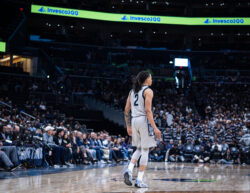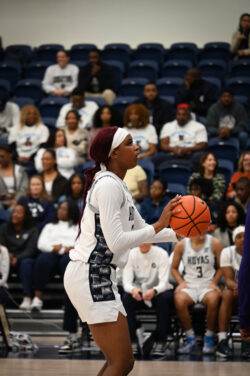After a dominant romp over then second-ranked Connecticut in their Big East opener, the young 2008-09 Georgetown Hoyas demonstrated that they had the talent to run with the best teams in the country. Their offense was clicking, their defense was solid, and freshman wunderkind Greg Monroe manhandled the 7’3” Hasheem Thabeet on both sides of the floor. In the very next game, though, the burly frontcourt of the Pittsburgh Panthers exposed and exploited the precocious Hoyas’ main weakness—a lack of toughness and determination in rebounding.
The Hoyas were able to overcome poor rebounding margins against Syracuse and Connecticut by raining threes from all over the court. In the Pitt game, however, the Panthers’ strapping DeJuan Blair simply overpowered and outworked anyone the Hoyas threw at him, pulling down seventeen rebounds (7 offensive) in a crushing home defeat. No player on the Georgetown roster was able to step up and meet Blair’s hard-nosed effort.
Although Monroe was touted as the heir to Roy Hibbert in a long line of menacing Georgetown centers who dominated the paint and left opposing players with bruises, he is no Patrick Ewing. Monroe plays a silky point guard’s game in a center’s body, and while his height, agility and vision make for a matchup nightmare, he doesn’t play with the brutish physicality of the prototypical Georgetown center, leaving the Hoyas with a painfully obvious rebounding deficiency.
Giving up offensive rebounds is especially damaging for Coach John Thompson’s team, whose matchup zone defense forces teams into taking low-percentage shots. But missed shots provide opposing teams plenty of opportunities for easy lay-ins unless the defense can corral rebounds.
The Hoyas’ offensive philosophy also makes giving up second-shot opportunities painful. Their Princeton-style offense requires patience and timing; the team frequently uses all 35 seconds on the shot clock before shooting. This strategy of making the extra pass creates easy looks at the basket, but it also decreases the speed of the game. The Hoyas play at the sluggish pace of 66.3 possessions per game (235th fastest in the nation), so giving opponents two possessions for the price of one really stings.
Although it’s unreasonable to expect a dramatic improvement before the season’s end, this issue could be offset by a shift in offensive philosophy. Instead of walking the ball up the court and executing their half-court offense, the Hoyas could look to push the ball forward in transition and score on the fast break, giving them another option when their offense is stagnant and their poor rebounding gives the opposing team a chance to score easy baskets.
The roster is well suited to a more up-tempo style. Point guard Chris Wright is quick enough to outrun most defenders, and big men Monroe, Henry Sims, and Dajuan Summers are faster and more agile than most of the lumbering, bulky forwards who defend (and outrebound) them.
Unlike many “half-court” offenses which rely on the rigid execution of prewritten set plays, Coach Thompson’s Princeton offense would translate easily into the full-court break. The Hoyas already score on improvised cuts and pinpoint passes; they just have to start doing it on the run. And while the matchup zone doesn’t put players in a good position for rebounding, it forces a lot of turnovers and missed threes—the sparks that usually ignite the break. Greg Monroe is already considered one of the best-passing centers in the country-—imagine him tossing quick outlet passes down the sideline.
The Big East is chock-full of brawny big men who bully their way towards rebounds. In this rough-and-tumble conference, these green Hoyas can’t win by outmuscling their opponents. They’ll just have to outrun them instead.




